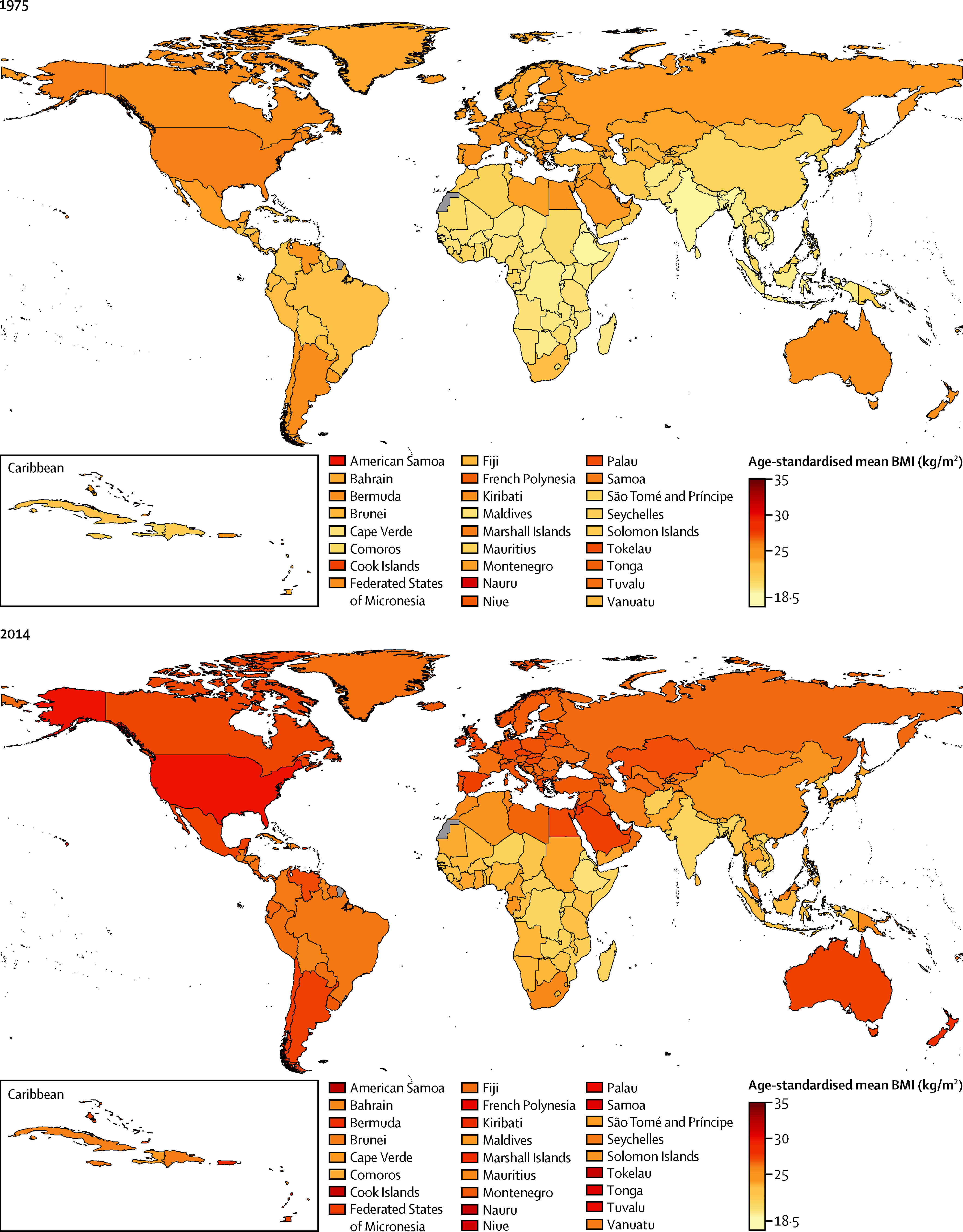The US is no longer the most obese nation - one country is doing even worse

An overweight woman sits on a chair.
Image: REUTERS/Lucas Jackson
Reaching the UN target for halting the rise in obesity rates by 2025 is impossible, according to new research.
The study, published by the Lancet medical journal, has found that by 2025 one in five adults worldwide will be obese, leading to significant health risks.
By comparing the body mass index (BMI) of adults in 186 countries over almost 30 years, researchers from Imperial College London found that the number of obese people worldwide had risen from 105 million in 1975 to 641 million in 2014.
Women are more likely to be obese, with the study finding 375 million obese women in the world in 2014, compared to 266 million obese men.
“Over the past 40 years, we have changed from a world in which underweight prevalence was more than double that of obesity, to one in which more people are obese than underweight,” said senior author Professor Majid Ezzati.

How is obesity defined?
The World Health Organisation (WHO) defines obesity as abnormal or excessive fat accumulation that presents a risk to health.
BMI is often used to determine overweight and obese adults. The weight-for-height index divides people’s weight in kilograms by the square of their height in metres.
People with BMIs of 25 or more are considered overweight by the WHO, while those with BMIs of 30 or more are obese.
The WHO notes that BMI is a useful population-level measure for both sexes and all adults, however it should only be considered a rough guide as “it may not correspond to the same degree of fatness in different individuals”.
What are the risks of obesity?
A high BMI can lead to noncommunicable diseases, the WHO notes, including cardiovascular diseases, diabetes, musculoskeletal disorders and some cancers.
Although obesity is a problem more often associated with high income countries, many low and middle-income countries are now facing what the WHO deems a “double burden of disease.”
These countries are at risk of infectious disease and under-nutrition, while at the same time facing an increase in noncommunicable disease risk factors such as obesity.
“It is not uncommon to find under-nutrition and obesity existing side-by-side within the same country, the same community and the same household.”

Where is obesity the biggest problem?
According to the researchers, global obesity has reached crisis point. The map above shows the global increase in overweight and obesity in men from 1975 to 2014.
China has overtaken the US as the most obese nation, with almost 90 million obese people. The United States is close behind with over 87 million.
The increase in severe obesity (BMI of 35 and above) in China has seen the country move from 60th place for men and 41st place for women in 1975 to second for severe obesity for both men and women in 2014.
The United States is still home to the highest population of severely obese people.
The nations with the highest average BMI rate in the world are the islands of Polynesia and Micronesia, where more than 38% of men and over half of women are obese.
English-speaking countries are more highly affected by obesity. Almost a fifth of the world’s obese population live in just six English-speaking countries – Australia, Canada, Ireland, New Zealand, the UK and the US.
How can we tackle obesity?
Professor Neena Modi, President of the Royal College of Paediatrics and Child Health, said: “This is an international problem, and worldwide joined-up thinking is needed to make progress.”
The WHO recommends supportive environments and communities, stating that they are fundamental in shaping people’s choices, the organization also urges people to make healthier food choices and do regular physical activity.
A Global Action Plan for the prevention and control of non-communicable diseases 2013-2020, developed by the WHO, aims to achieve UN commitments including a 25% relative reduction in premature mortality from non-communicable diseases by 2025.
The report’s researchers have stated that to avoid an epidemic of severe obesity, globally policies must be implemented that can slow down and stop the worldwide increase in BMI.
Have you read?
Don't miss any update on this topic
Create a free account and access your personalized content collection with our latest publications and analyses.
License and Republishing
World Economic Forum articles may be republished in accordance with the Creative Commons Attribution-NonCommercial-NoDerivatives 4.0 International Public License, and in accordance with our Terms of Use.
The views expressed in this article are those of the author alone and not the World Economic Forum.
Forum Stories newsletter
Bringing you weekly curated insights and analysis on the global issues that matter.